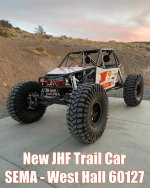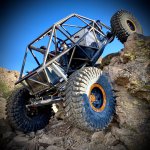Sean
Well-known member
- Joined
- Feb 9, 2023
- Member Number
- 6041
- Messages
- 1,412
This is regarding a front engine, 2 seat, 4 wheel steer portal chassis:
To me, matching the front & rear diff on one side of the car makes a lot of sense. Same axle shafts....diff has to clear the same obstacle. With either set up, the offset diff allows a small, axle mounted suck down winch.
What is the advantage of having the diffs on opposite sides of the car? Mostly I see passenger drop front and driver drop rear.
If they are both offset the same distance, just to opposite sides....it's still the same spares (which makes sense), but is the reasoning that the rear diff on the driver side will be easier to locate since it's directly behind your seat?
I'm leaning towards building with the diffs both on the passenger side (front Hero tcase is passenger drop, so that is fixed), but should I be considering putting the rear on the driver?
To me, matching the front & rear diff on one side of the car makes a lot of sense. Same axle shafts....diff has to clear the same obstacle. With either set up, the offset diff allows a small, axle mounted suck down winch.
What is the advantage of having the diffs on opposite sides of the car? Mostly I see passenger drop front and driver drop rear.
If they are both offset the same distance, just to opposite sides....it's still the same spares (which makes sense), but is the reasoning that the rear diff on the driver side will be easier to locate since it's directly behind your seat?
I'm leaning towards building with the diffs both on the passenger side (front Hero tcase is passenger drop, so that is fixed), but should I be considering putting the rear on the driver?


